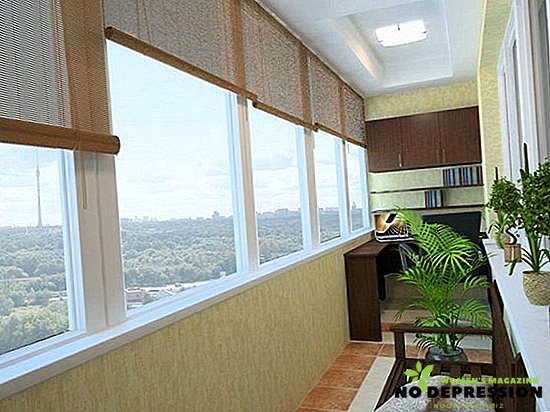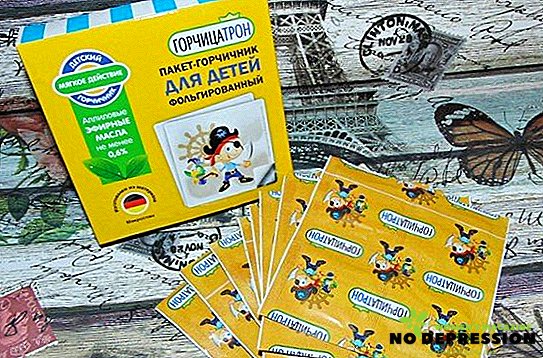The balcony is the same part of the apartment as the heated rooms. If you want to spend as much time on it as possible, having arranged for yourself a private office or a small room for rest, not only in summer, but also in winter, you need to make insulation.

The main thing in this issue - to choose the right material.
What you need to work
To carry out work on weatherization, we need the following materials:
- wooden slats;
- self-tapping screws;
- dowel (better with caps);
- insulation;
- polyurethane foam;
- roofing material or any other material for waterproofing.
Insulation consumption is calculated based on the area of the room. The cost is different, but it is not recommended to choose the cheapest materials, since they will be of poor quality and will not last long.
Before you make the insulation, remove all things from the balcony, prepare the floor, walls - remove old wallpaper, floor covering, etc.
But it is desirable to leave the partitions, since they will serve as additional insulation.
The better to warm the balcony: choose the material
It is very easy to make heat insulation today, since the modern market offers a huge selection of materials. According to experts, the optimum material thickness should not exceed 3 cm.
Penoplex
By its structure, this material is similar to foam, is a polymeric foam substance. Moreover, when we warm loggias and balconies, it is usually used that the extradited version of expanded polystyrene, that is, penoplex. Its benefits include:
- high strength - when cutting the material with a sharp knife, an even and neat edge will remain;
- excellent thermal insulation properties;
- high level of strength to mechanical damage, because this material can be used for floor insulation;
- material almost does not absorb moisture;
- fire resistance.
Not without its drawbacks. For example, this material has a rather high cost. In addition, the density of the material should be considered. According to experts, slabs with the “C” marking and a density of up to 37–37 kg / cubic meter are best suited for balconies.

Izolon
The foil isolon differs from other heat-insulating materials by a low level of heat loss, which is ensured by the ability of the material to reflect heat. The advantages also include low thermal conductivity. On the market, isolon is sold in the form of a sleeve, roll or sheet - the choice depends on the ease of use in a particular case.
Izolon has such advantages as:
- lightness and elasticity - the material is quite difficult to knead;
- simple installation - a person who has never taken tools in his hands will cope with the work;
- high rates of heat and sound insulation;
- vapor permeability;
- high resistance to chemical reagents.
True izolon simply breaks, because when installing you need to be very careful.

Styrofoam
It is a solid plate. The use of this material is very common because it has such advantages as:
- high-quality sound insulation;
- insensitivity to temperature changes;
- high level of thermal insulation;
- low density;
- fairly low cost compared to other materials;
- long service life;
- simplicity in work with material.
True there is a foam and cons:
- it does not allow air, and therefore, the walls will not "breathe";
- low level of strength, because the foam can be easily damaged;
- upon contact with paints or varnishes, the product becomes unusable;
- burns well.

Penofol
Double-layered material with good thermal insulation properties - it can be used to insulate a balcony, not only inside but also outside. The advantages of the material include:
- fire resistance;
- high environmental friendliness;
- excellent noise insulation;
- ease of installation;
- low thermal conductivity;
- small thickness of the product, which will save space in the room.
However, it is worth remembering about the shortcomings - they need to know before starting work. For example, it is difficult to fasten it, for example, it is impossible to use nails, because it reduces the heat-saving effect. Also, the material has a low level of mechanical strength.

Vata
This material is of several types:
- slag wool;
- stone wool;
- glass wool.
For warming loggias, stone wool is usually used, because it has the following advantages:
- refractoriness;
- resistance to temperature fluctuations;
- low thermal conductivity;
- mechanical strength;
- resistance to chemical elements;
- availability of water repellency.

But also this material has some disadvantages. For example, the binder in the composition is formaldehyde resin, which after some time will begin to release phenol, which is dangerous for humans. For this reason, this product is undesirable to use for interior work.
Step by Step Guide to Weatherization
Before proceeding to work, it is imperative to hold the glazing, otherwise any measures will be simply useless. In addition, proper insulation implies:
- sealing seams and cracks, for which it is better to use a mounting foam or special sealant;
- waterproofing, to avoid the appearance of mold or mildew;
- laying insulation material on all surfaces - walls, floor, ceiling;
- installation of the frame for further installation of insulation.
Let's take a closer look at each step.
Floor and walls
The instruction is as follows:
- Laying on the floor vapor barrier material.
- Installation of longitudinal rails, transverse lags. To keep things as smooth as possible, use the building level.
- Filling the free space of the selected heater.
- Laying on top of wood board, which will act as a subfloor.
- Laying the lag of the second floor - the space between them is also filled with insulation, for example, polystyrene foam.
The wall insulation is almost the same: the surfaces are first covered with any heat insulator, then a frame is installed, between which the insulation is laid. If any joints remain, they must be sealed with sealant.

Window
One of the most important moments is the embedding of window slopes, from where all the heat comes out most often. This stage is the longest, since it takes about 3-5 days. There are a few rules:
- It is necessary to apply at least three layers of plaster, and two layers should be from a special heat-insulating mixture, the last one is ordinary plaster.
- Before you apply a new layer, you need to wait until the old one dries, it takes about a day.
- The last layer of plaster must be carefully polished and painted, which will protect the balcony from moisture.
If you are not sure that you will be able to insulate the balcony from the inside yourself, these works can be entrusted to specialists performing turnkey work: they will hand you the fully finished room. The average cost of work is (per 1 square meter):
- Works on thermal insulation - from 600 to 1800 rubles, depending on the type of insulation.
- Finishing loggia - from 1200 to 2000 rubles.












